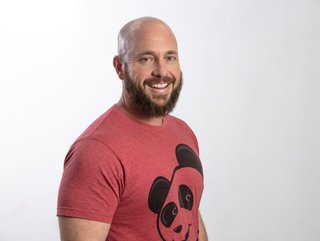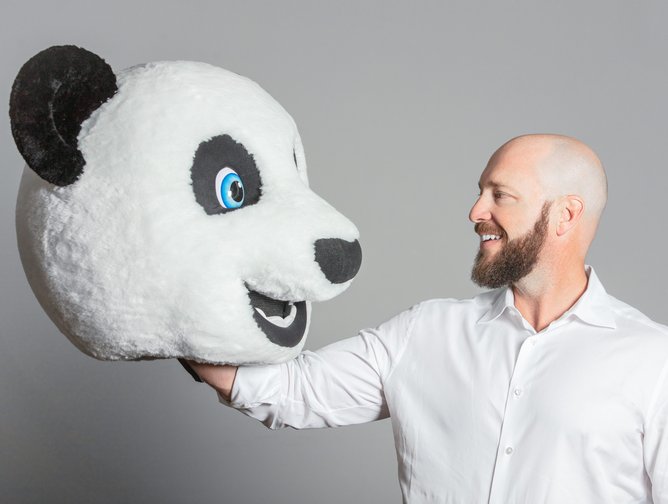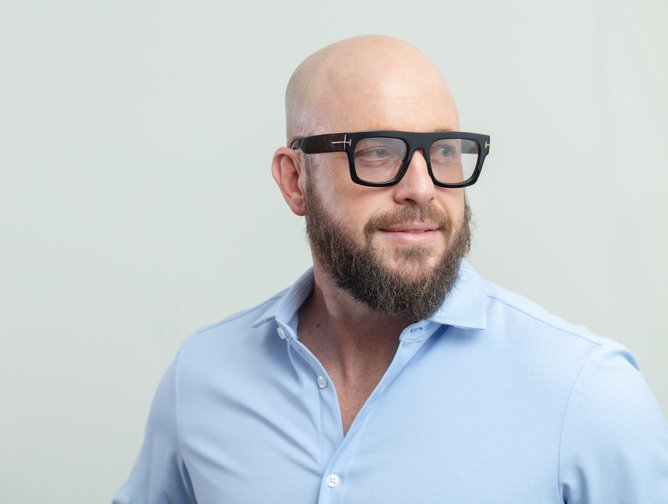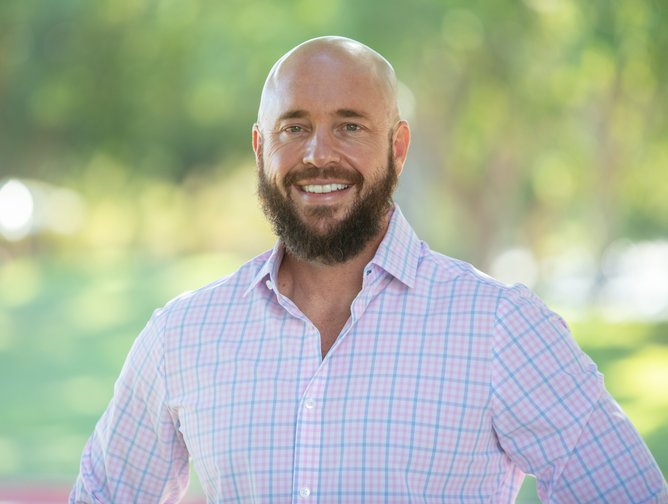Asset Panda CEO Rex Kurzius on Innovating and Taking Risks

In the fast-paced world of business, efficient asset management can make or break an organisation's success.
Enter Rex Kurzius, the visionary CEO and Founder of Asset Panda, whose innovative approach to asset management has revolutionised the industry.
With his cutting-edge technology, relentless drive, and unwavering commitment to customer success, Kurzius has propelled Asset Panda to the forefront of the asset management market.
The journey of Asset Panda began when Kurzius recognised a glaring gap in the asset management market. Traditional methods were cumbersome, expensive, and needed more flexibility, leaving businesses struggling to track, manage, and maximise the value of their assets.
Fuelled by his entrepreneurial spirit, Kurzius set out to develop a solution that would streamline processes and empower businesses to take control of their assets.
Despite initial struggles, Rex perseveres to build Asset Panda into a multi-million dollar award-winning company.
We caught up with Rex to find out more about his entrepreneurial journey.

Rex, tell us how it all began – what was the catalyst to ignite your entrepreneurial story?
I drew inspiration from my father, a first-generation immigrant who owned his own bakery business. Throughout my childhood, I believed that every family followed a similar path; John Doe's family ran the car company while others were in charge of the telecom industry, restaurants, etc.
This constant exposure to entrepreneurship shaped my mindset. However, after my father's passing and the subsequent loss of our family's possessions, I began exploring alternative career paths. I was reluctant to embrace a conventional life since my upbringing had been far from ordinary. Consequently, I aimed to capitalize on my capabilities, and to me, the avenue for achieving this was entrepreneurship.
At what point in your journey did you know you were on to a winner?
During the initial stages, I decided to engage a management consulting firm to conduct an industry assessment. Frustrated by my own uncertainty about the potential, I invested a significant sum in this endeavour.
Months later, they handed me a really big report, like a thick phone book. In a meeting that followed, I anticipated insights that would propel my idea forward, a common expectation when dealing with management consultants.
However, their perspective was counterintuitive; they presented the report and conveyed that this industry wasn't worth pursuing. As I studied the report, focusing on the section concerning alternatives and rival companies, an intriguing realisation surfaced. Amidst established competitors and widely recognised industry giants, I found myself quietly smiling internally.
The reason for my optimism was that I had previously interacted with several of these renowned companies during my own entrepreneurial ventures, only to discover that they hadn't addressed the problem I aimed to solve. This revelation illuminated an opening in the market – a chance to reframe the problem at hand and devise a novel approach to tackling it.
You have scaled quickly. What are the CEO secrets to fast growth?
Asset Panda has grown significantly, reaching more than 60 countries and overseeing the tracking of millions and millions of assets.
What sets us apart is that we're not limited to any specific industry; instead, we're a versatile platform that benefits various types of clients. Our global reach and horizontal approach indicate that the demand for a universal platform like ours is strong. To meet this demand, we're currently revamping our internal processes and technology.
Through my years of building businesses, I've learned some valuable lessons. Early on, it involved a lot of trial and error as I navigated the complexities of running a company and leading a team.
Over my two decades in the entrepreneurial journey, I've distilled these experiences into what I call the three C's: clarity, communication, and culture.
Clarity means everyone understands our company's mission and goals, along with their individual roles in achieving them. Effective communication ensures that these objectives are conveyed clearly to both our employees and clients. Cultivating a supportive culture is crucial. This means creating an environment where people can make mistakes and learn from them, moving forward even when things don't go perfectly, all while feeling connected to a larger purpose.
How have you funded your business and have there been challenges?
I've built this business from the ground up, using my own funds every step of the way. I've financed the entire journey myself. Indeed, each phase of the company's growth has brought its share of significant challenges, and I anticipate more to come.
It's through these challenges that we truly expand and reach our fullest potential. Taking the easy route doesn't lead to growth; it's the tougher paths that drive us to evolve. I'm consistently motivated to push my limits and explore how far we can stretch. I firmly believe we're in a remarkable era for entrepreneurship – a golden age.
With technology, we have instant access to global markets. Nowadays, the focus for entrepreneurs has shifted towards the strength of ideas and determination rather than what it was during the earlier stages of my entrepreneurial journey.
Back then, I had to secure substantial funds for things like computers, servers, and cold storage rooms. Today, there's unprecedented access to information, a phenomenon I consider unparalleled in history. With the internet's rise, it all boils down to access to information, how you interpret it, and the synergy between your business model and the determination you put behind it.

In what ways have your early struggles informed your path to success?
One that immediately comes to mind is how I've evolved as a leader in managing and motivating people. In the early days of starting my first company and building it up, I didn't quite grasp effective management and motivation techniques. My default approach was akin to that of a drill sergeant – giving orders, leading mainly through example, and employing a strict, authoritative stance. I leaned heavily on being a driving force, almost like carrying a draconian stick.
However, I've transformed over time. I've come to understand that employees are striving to live their best lives, and it's the company's role to align with that aspiration and support them in achieving it. Through this perspective, positive outcomes tend to be far more effective motivators than negative consequences. The concept of the 'carrot' – rewards and incentives – is often a more powerful driver for the right individuals than the 'stick' of punishment.
I had to undergo a shift from an authoritarian leadership style to one that's inspirational. This change involved setting a positive tone internally and creating a culture and business model that foster an environment where people can flourish. In essence, it's about transitioning from a commanding approach to an empowering one, where I facilitate the success of those who seek it by providing them with the conducive conditions to thrive.
In starting and scaling Asset Panda, what has been the biggest challenges?
When establishing a company, numerous challenges arise, particularly when creating a novel business model to address an age-old issue. Our company sought to tackle a familiar problem with a fresh approach. Our main objective was aligning fundamental marketplace problems (FMPs) with perfect client profiles (PCPs). This meant venturing beyond our own immediate sphere of influence to truly understand the nature of the problem.
My motivation stemmed from a personal experience – in a previous business, I rapidly expanded, acquired a substantial amount of equipment, and subsequently faced challenges in keeping track of it all. This experience led me to the inception of Asset Panda. As we ventured into various sectors such as schools, fire departments, governments, and more, we recognised that while the core problems were similar, each had its unique nuances.
Mapping out the FMPs and PCPs within a horizontally applicable solution that could also be adapted for specific industries was a complex task. Developing an application that could scale according to clients' requirements without sacrificing industry-specific functionality was no small feat. This endeavor required significant investments of time, effort, energy, and resources.
We have essentially worked to solve a Rubik's Cube of challenges, a puzzle that continuously evolves. It's a perpetual challenge, but the value we derive from solving such intricate problems is immeasurable. Our mission involves addressing a global issue with a horizontal, industry-agnostic approach. The challenge is formidable, but it's also enjoyable. Having been committed to this journey for over a decade, I wake up every morning with the same enthusiasm I had when I started the company. This, in itself, speaks volumes about the rewarding nature of the journey.
How would you describe your leadership style and how has that evolved?
My leadership approach has undergone significant transformation, evolving into a more visionary and inspirational style.
In the past, I used to be the individual charging ahead, taking on various roles and tasks. However, as the company has grown, I've realised the necessity of empowering others to make decisions and develop their own visions for their respective groups.
Nowadays, my role as a leader is to attract and retain the finest talents globally, driving the progress of Asset Panda. Rather than imposing my own ideas and dictating operational methods, I'm focused on nurturing an environment where diverse talents can flourish. In the early stages of my career, I struggled with this understanding. My ego was tied to how much work I could handle, how much information I could absorb, and my significance in daily operations.
Discovering the power of hiring skilled individuals and allowing them to showcase their abilities has been liberating. Creating a secure space that encourages experimentation and learning from failures has been crucial. It's truly eye-opening to realize that team members might excel in certain skills beyond my capabilities. This realization underscores the essence of effective leadership – assembling a team capable of collectively achieving the envisioned goals.

What key lessons have you learned about leadership and business?
The key lessons are the things you and I learned on the sandbox when we grew up. You need to treat other people the way you want to be treated. You want to be respectful of people regardless of who they are, where they come from, and you want to be around people that are uplifting and motivating to yourself. So I've learned over time to create and foster environments where we have people that treat themselves and treat other people the way they want to be treated themselves.
There's an old saying that says you can really dictate your future by determining who you spend time with. If you want to be a successful person, hang out with five others and you'll be the sixth. The idea is throughout the company to foster people that are winners that are motivated, that want to move themselves forward.
How important has innovation and risk-taking been to your success?
In the journey of entrepreneurial success, innovation and risk-taking play pivotal roles. Throughout my life, risk has been a constant presence. I made a conscious decision early on to perceive every endeavour as carrying inherent risk. This mindset helps eliminate the paralysing fear of risk by acknowledging that life itself is filled with uncertainties, whether we realise it or not.
Helen Keller's words resonate deeply with me: "Life is either a daring adventure or nothing. Security does not exist in nature."
I embraced this philosophy, viewing risk as an integral part of progress. I coined the term 'hamster wheel of success' to illustrate this concept. When an idea emerges, we strive to execute it. More often than not, the initial concept fails, serving as a stepping stone for growth and adaptation.
I approach every project and venture with an assumption that it will initially fail. I internalize this belief and use it to actively seek out failure. By embracing failure, I uncover valuable lessons that guide future attempts. Avoiding failure stifles innovation, while facing it head-on breeds innovation. This cycle is integral to success – acknowledging risk, expecting failure, and channeling it into a process of evolution.
Every initiative is undertaken with an understanding of the significant risk involved. The acceptance of this risk, the anticipation of failure, and the determination to transform failure into progress all contribute to the creation of something remarkable and extraordinary over time. Asset Panda is a testament to this approach – a product of embracing risk, learning from failure, and evolving into an exceptional outcome.
What other tech breakthroughs are you working on? What next for Asset Panda?
Asset Panda is embarking on an exciting journey of innovation and advancement. Our team is diligently crafting the next generation of our platform, poised to launch next year. With over 11 years of experience working closely with customers, understanding their challenges, and addressing their concerns, we've honed in on ways to leverage cutting-edge technology to simplify processes, enhance user experience, and provide effective solutions to the issues they face in their industries.
Our upcoming developments will introduce remarkable technological enhancements to the Asset Panda platform. To provide an analogy, it's like transitioning from driving a basic economy car to experiencing the sleek and powerful performance of a Ferrari. We're paving the way for a streamlined, elegant, and highly scalable experience, allowing businesses to operate in any language, currency, and industry on a global scale.
Our substantial investment in technology is particularly exciting. We're diving into the realms of artificial intelligence, machine learning, advanced scanning technologies, and the Internet of Things (IoT). By aggregating data from various devices and IoT connections, Asset Panda is poised to revolutionize how businesses manage their assets and operations.
With enthusiasm and anticipation, we look forward to unveiling these new advancements to the world. The trajectory of Asset Panda's development showcases our commitment to providing state-of-the-art solutions and enhancing the capabilities of businesses across the globe.
Finally, what 5 pieces of advice would you give to other tech entrepreneurs?
- First and foremost, it's vital to test your concept before fully committing to it. Storyboarding technical ideas using tools like Figma is a valuable practice. This involves creating a tangible representation of your concept, allowing you to gather feedback and make adjustments swiftly. The key is to seek input from others early on, avoiding the pitfall of falling in love with your own idea.
- Leave your ego aside and embrace active listening when presenting your ideas to potential customers and employees.
- Leveraging existing technologies is another critical aspect. Selecting the right partners for your tech venture is as essential as any other operational decision. Collaborating with companies that contribute to your overall success is crucial.
- Implementing content marketing is a powerful strategy. Share high-quality content that educates and positions your brand as a thought leader. This approach not only builds your brand but also helps establish trust and credibility within your industry.
- Lastly, patience is paramount. Building a successful tech company takes time. In my experience with Asset Panda spanning over 11 years, the initial 5.5 years were marked by challenges, failures, learning, adapting, and eventual successes. The myth of overnight success is just that – a myth. The journey is demanding, requiring persistence and a willingness to pivot when necessary. It's a process of continuous learning and growth.






